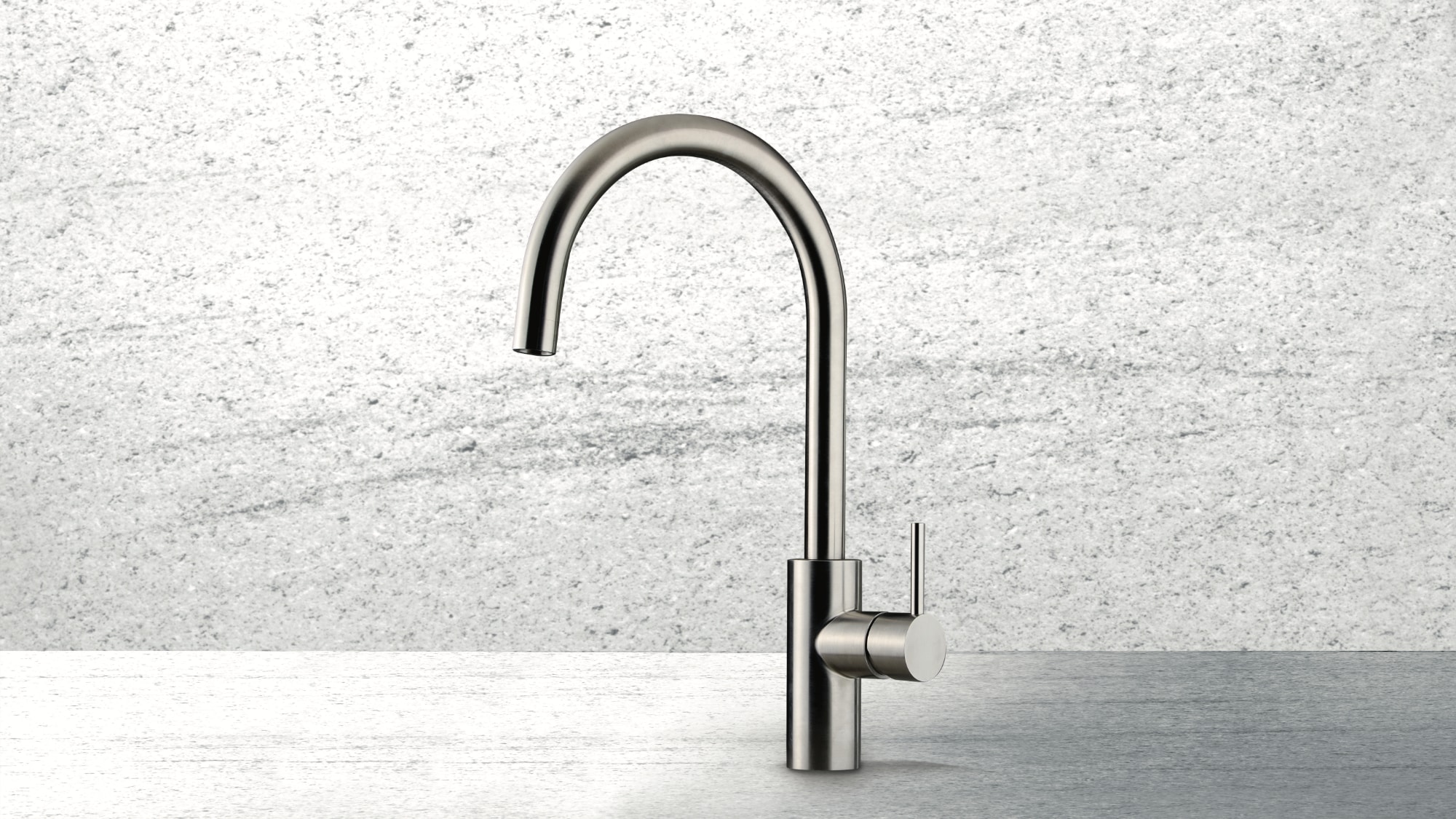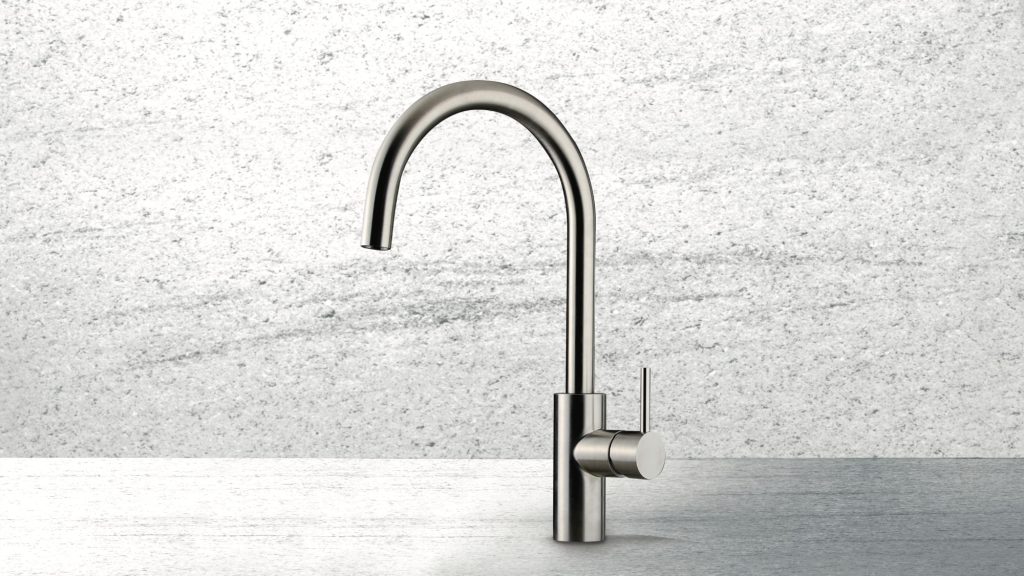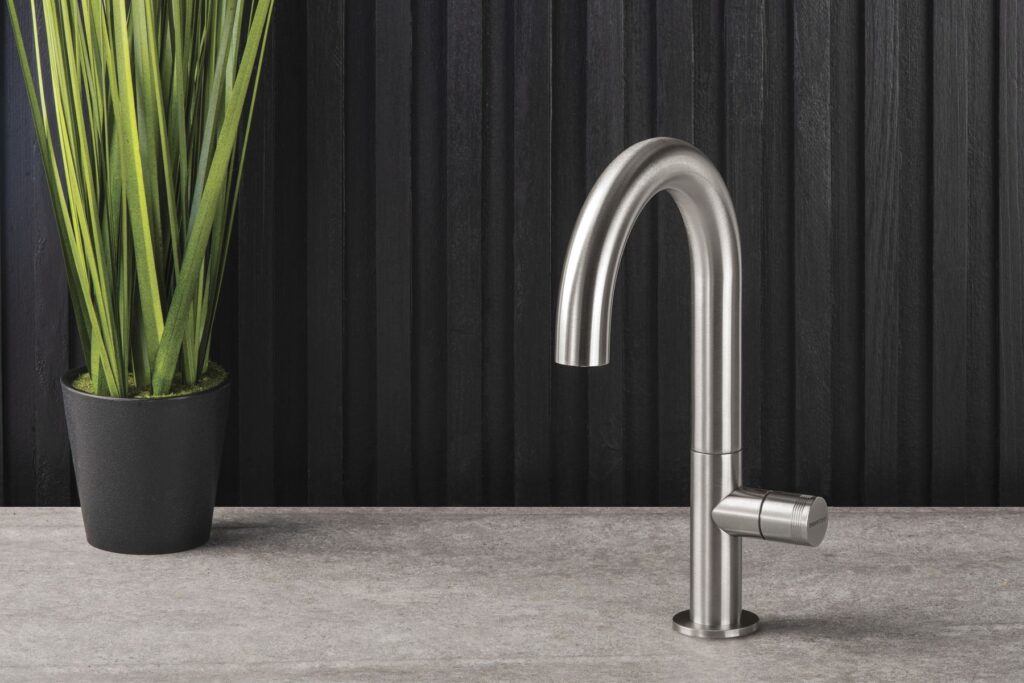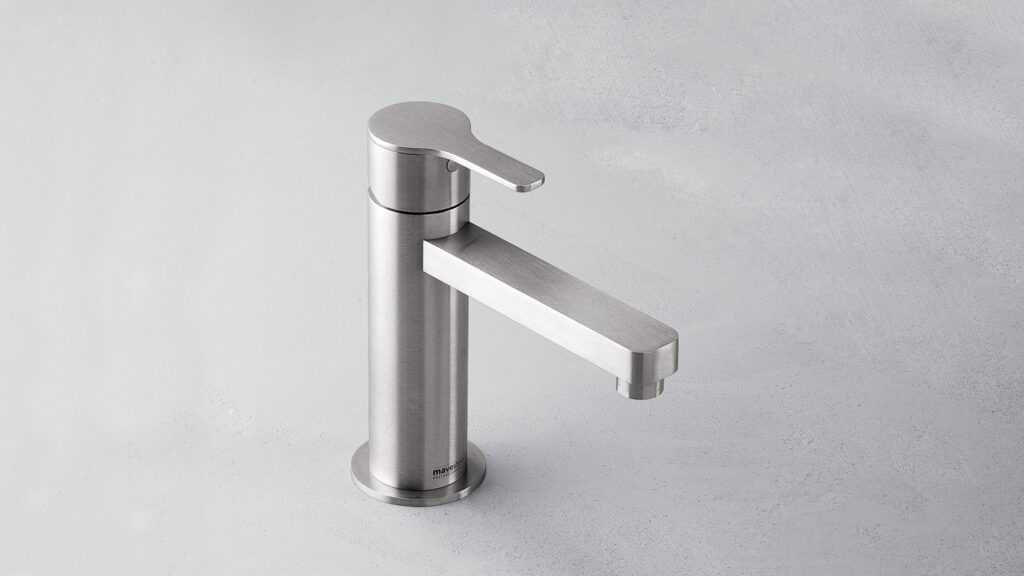Stainless steel (satin polished) is a material that is increasingly used in the production of bathroom and kitchen faucets. The reasons are many and concern both the design and the better functionality and durability that stainless steel guarantees compared to other materials, such as brass.
This should not be confused with the term “satin finish” or “brushed finish” which is used in the production of faucets made of brass or other alloys.
These finishes in fact make the product look like steel, proving how much this aspect is sought after nowadays by architects and interior designers, but the difference is notable.
Stainless steel products are distinguished by the acronym AISI followed by a number (304 or 316 – the latter being the best)
To ensure you purchase only the best satin or polished stainless steel faucets, we have created a guide to clarify the main aspects of each process.
Why choose stainless steel
In addition to its aesthetic beauty, stainless steel offers a series of technical advantages that make it particularly suitable for use in humid and heavily used environments, such as kitchens and bathrooms.
Among the main characteristics that make stainless steel an excellent choice, there are:
- corrosion resistance;
- durability;
- and hygiene.
Stainless steel is highly resistant to corrosion due to its chemical composition, which includes a significant percentage of chromium. This element forms a protective film on the surface of the metal, which prevents oxidation and rust formation, even in those environments that are constantly exposed to humidity.
Thanks to its smooth and non-porous surface, stainless steel is extremely easy to clean and does not favor the proliferation of bacteria and microorganisms. Also for this reason it is a highly sought-after choice for environments where hygiene is essential, such as the kitchen and bathroom.
The differences between satin stainless steel and polished stainless steel
One of the biggest confusions is between satin and polished stainless steel. While both offer a durable, matte finish, there are a few key differences to keep in mind when choosing the best finish for your faucet.
In the case of satin stainless steel, the finish is obtained through an initial polishing process, during which a lower degree of abrasiveness is applied, creating irregular micro lines on the surface. This gives the metal a more uniform and less reflective appearance than polished stainless steel, which tends to have more evident linear reflections. The result is a slightly opaque surface.
Polished stainless steel taps, on the other hand, stand out for their extremely shiny finish, obtained through a more intense polishing process that makes the surface perfectly smooth and reflective. This type of processing makes the metal shine elegantly, giving a mirrored effect that captures the light and adds a touch of luxury to the rooms. The shine of polished stainless steel makes it ideal for contexts where you want to create a visual impact of great refinement, such as modern kitchens or designer bathrooms.
Satin or polished, but always stainless steel
Whether you prefer a satin or polished finish, one thing is certain: the choice must always fall on stainless steel.
Stainless steel does not contain toxic substances such as lead, which can be present in other materials used to produce faucets. For this reason, it is a safe choice for drinking water because it ensures that the water dispensed from the faucets is pure and free of contaminants.
Furthermore, compared to brass, stainless steel guarantees a more refined, sophisticated and elegant look; it never loses its typical shine and, to the touch, gives a feeling of greater robustness and reliability.
Stainless steel, satin or polished, is the safe choice.




